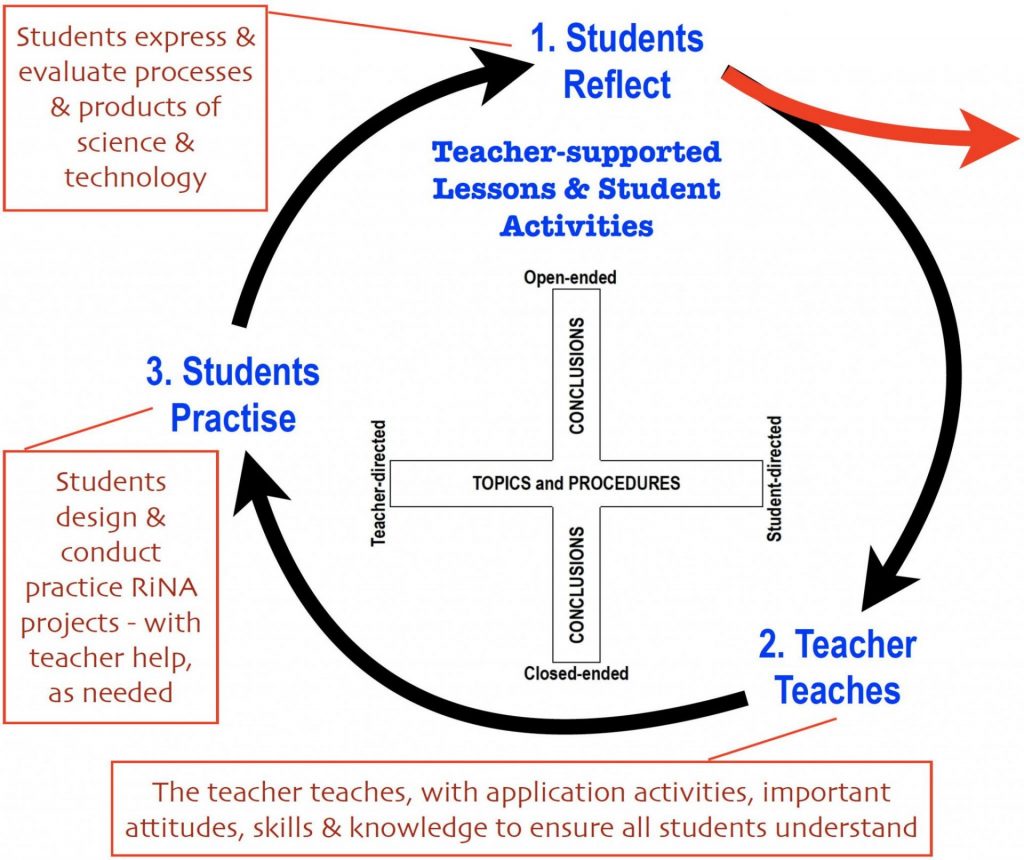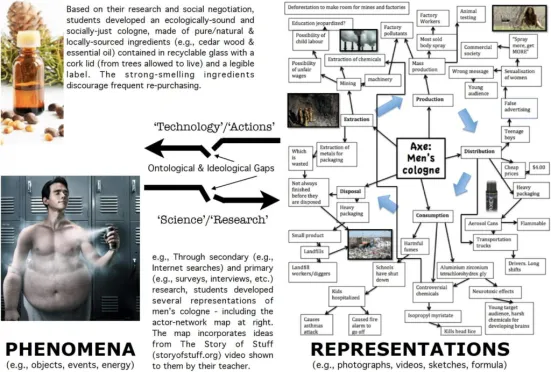Products Educ8n
To achieve almost anything, a person needs a good supply of useful knowledge. School science/STEM has, indeed, placed much focus on educating students about ‘products’ (e.g., knowledge of laws [e.g., of magnetism], theories [e.g., kinetic-molecular], functioning of technologies [e.g., electronic circuits). With such knowledge, students/citizens can engage in higher-order thinking (e.g., analyses, syntheses & evaluation). Teaching & learning of such ‘products’ is not, however, straightforward. Often, curricula and traditional practices expect students to learn too much of it, too fast and without student activities enabling them to apply newly-taught knowledge in meaningful contexts. Additionally, common inquiry-based learning practices often limit discovery to advantaged students (e.g., rich in cultural & social capital).
STEM Pedagogy
Teaching students about different STEM products is very common, but it may not always be done well – given studies suggesting public science literacy tends to be low. We suggest teachers base much teaching and learning on learning theories, such as constructivism – which acknowledges that learners typically ‘construct’ new unique attitudes, skills & knowledge (ASK) by combining ASK already in their minds and bodies with ASK related to certain experiences. Different people see, for instance, different objects when they look at this black-and-while image. Different concepts from constructivist learning theory can be used to justify different aspects of 3-phase (STEPWISE) pedagogy at right/below. For example, in the Students Reflect phase (#1), asking students to express their existing ASK about a topic (e.g., animal growth) can help students to become conscious of their current positions and then possibly change them if ASK from their experiences make more sense. Constructivism also seems useful in justification of our recommendation that teachers directly teach ASK, rather than expect students to discover many of them (e.g., see here), but also encourage students to soon use newly-taught ASK in related application activities (e.g., case method about conflict diamonds). Note that, in all 3 phases of the pedagogy at right/below, teachers may teach ‘products’ in the context of STEM-SE relationships and associated RiNA projects – all of which involve knowledge and skills.


To stimulate students to reflect on and express their personal pre-instructional ASK, teachers can expose them to different experiences – such as photos of STEM products, as above – or to teacher demonstrations, videos, field-trips, etc. Students may be asked simply, ‘What do you know and want to know about this phenomenon and why?’ This may be fine, but some learners prefer different strategies, like drawing, etc. Also, after the teacher LATER teaches students (in the Teacher Teaches phase) about new ASK (e.g., actor-network theory), students’ later reflections could, for example, include drawing actor-network maps.

Teacher Input
To hep ensure all students have equal opportunities to learn very important ASK, teachers can use several different teaching strategies to try to match with students’ abilities and preferences. Although these can be limited to speech, many students prefer uses of visual aids. In the video below, left, for instance, the teacher uses physical demonstrations and visual aids to explain energy transfer in photosynthesis – which is, of course, extremely important for capturing atmospheric carbon dioxide and adding oxygen to atmosphere that can be liked to climate change. The video below, right, meanwhile uses text and graphics to teach about actor-network theory – which, related to ecology, notes that all living, nonliving and symbolic entities are interconnected. In addition to such classic techniques, like teacher explanations with videos, students can be shown simulations (e.g., about food chains and webs). Such teaching, regardless of methods, should largely be teacher-directed and closed-ended – again, to help ensure students’ knowledge is not limited to what they can discover.
Student Application Activities
Because direct instruction often is ineffective on its own, students should be engaged in activities that lead them to apply ASK just taught (e.g., as above). There are many application activity types. A very common one is a case method; that is, a documentary of a related context (e.g., fast food production & consumption) and sets of suggested activities and questions. We have developed several such case methods at STEM-SE/RiNA Case Methods. With students having more choices in such activities, teachers are urged to allow flexibility in students’ completed such assignments; that is, allow some open-endedness.
Student-led RiNA Projects
Once the teacher believes students are ready, they can then be asked to design and implement a more elaborate RiNA projects to address their concerns about STEM-SE relationships. Among numerous learning outcomes, such projects can deepen students’ understandings of ‘products’ (along with learning in other domains). Suggestions for this phase are similar to those for the Students Practise phase, except students are given very little guidance or support – to maximize students’ development of intellectual independence. Our group has found that, often, students can be motivated to achieve such independence when knowing that they will have to explain and defend their projects at a school STEM-SE/RiNA fair, like that depicted in the video at right/below.
